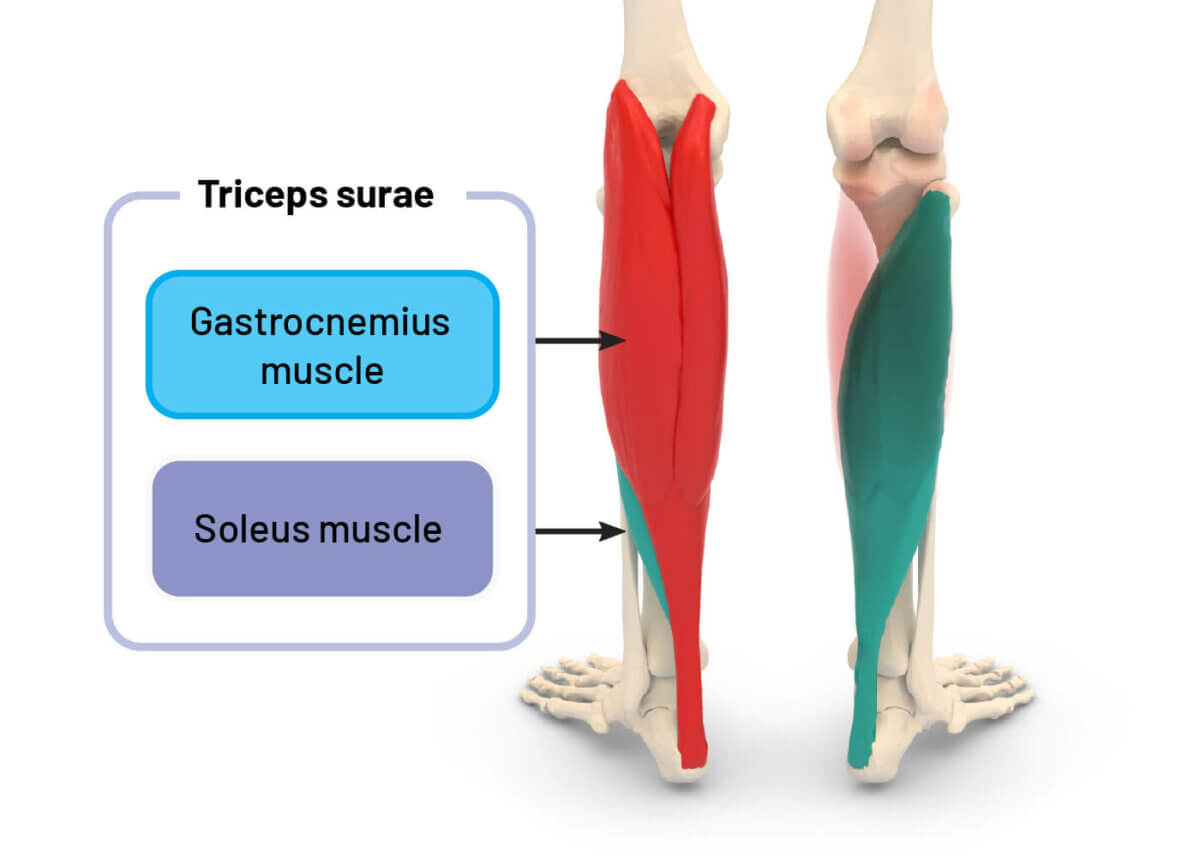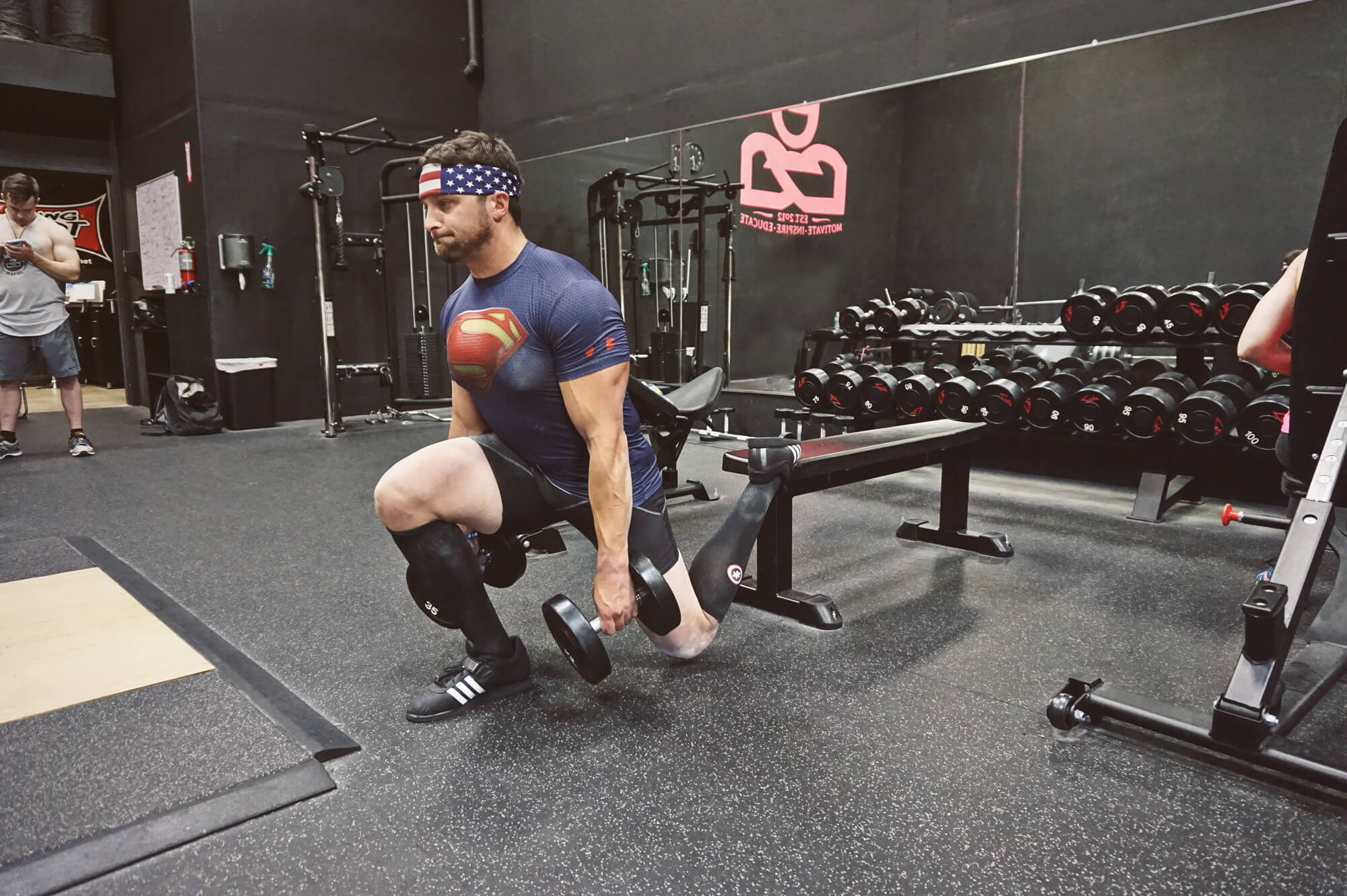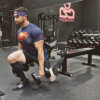A common belief is that training with different rep ranges and loads can target specific muscle fiber types. A study published two years ago investigated this idea and illustrates how muscles adapt to resistance training.
Overview
- What did they test? Muscle thickness of the soleus and gastrocnemius calf muscles using B-mode ultrasound and isometric calf strength using a dynamometer following LIGHT (20-30 RM) and HEAVY (6-10 RM) loading patterns.
- What did they find? Minimal differences between muscle groups and loading protocols, with negligible differences favoring LIGHT protocol for hypertrophy and the HEAVY protocol for strength.
- What does it mean for you? Loading pattern had no influence on fiber type-specific muscle growth and the calf muscles respond similarly to different loading protocols so long as a high degree of effort was used.
What’s the Problem?
Skeletal muscle cells are referred to as muscle fibers, muscle fibers are grouped into muscle bundles which constitute muscle groups. Skeletal muscle fibers are classified into two primary types of fibers, type I and type II. There are other subtypes of these muscle fibers, but the differences between fiber types are dependent on contraction speed, size of motor neurons, resistance to fatigue, force production, mitochondrial density, and other metabolic and contractile properties. Type I muscle fibers possess slow contraction speeds and are resistant to fatigue, making them more suitable for endurance exercise 2. In contrast, type II fibers have a much faster rate of contraction, which leads to a faster rate of fatigue but allows for greater force production 2. Type II fibers also experience greater hypertrophy from resistance training (RT) compared to type I fibers 3 4, which is probably why you don’t see many jacked endurance athletes. Most muscles in the body seem to have a fairly even distribution of type I and type II fibers, but some muscles can have varying proportions of type I or type II fibers 5 . For example, the triceps surae is the scientific name for the calf muscle, which is made up by the muscle pair of the gastrocnemius and the soleus pictured below in Figure 1.
Figure 1 Calf muscle anatomy

The gastrocnemius makes up the two large superficial muscle bellies of the calf and has a mixed composition of type I and type II fibers 5 6. The soleus is the flatter muscle that lies beneath the gastrocnemius and is composed largely of type I fibers 6. The differences in fiber type between the gastrocnemius and the soleus makes the calf muscle a suitable model for studying fiber type growth when training with different loading schemes, which is exactly what the current study did 1.
It’s been a common belief that in order to target type I muscle fibers individuals should use lighter weight and higher reps and to target type II fibers individuals should use heavier weight and lower reps 7. While there is some data to support fiber type hypertrophy from different loading patterns 8 9, a recent review by Grgic & Schoenfeld (2018) concluded there is insufficient data to make strong conclusions regarding fiber type hypertrophy and different loading schemes 10. Authors also suggest that differences in hypertrophy between high and low load resistance training (RT) protocols may be related to training to failure 10. This is supported by two well controlled studies that demonstrate when training to failure, load does not influence fiber type-specific hypertrophy 11 12. The present study we review provides more data supporting the notion that differences in loading patterns does not influence training adaptations in type I or type II muscle fibers.
Purpose
The primary purpose of this study was to compare changes in muscle strength and hypertrophy between LIGHT (20-30 RM) and HEAVY (6-10 RM) resistance training (RT) routines performing calf raises.







